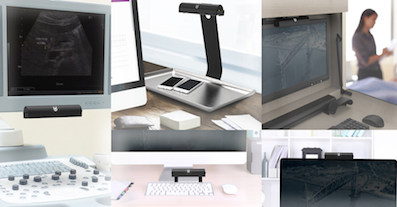 Cleanzine: your weekly cleaning and hygiene industry newsletter 17th July 2025 Issue no. 1171
Cleanzine: your weekly cleaning and hygiene industry newsletter 17th July 2025 Issue no. 1171
Your industry news - first
The original and best - for over 20 years!
We strongly recommend viewing Cleanzine full size in your web browser. Click our masthead above to visit our website version.
White paper demonstrates efficacy of self-disinfecting device on shared equipment
 Proximity Systems, which provides healthcare furniture and technology, has released a white paper demonstrating the efficacy of its UV-Clean self-disinfecting device. After a month-long clinical study, the company announced that its no-touch disinfection unit had been proven to be effective at reducing bio burden on computer workstation keyboards included in the study.
Proximity Systems, which provides healthcare furniture and technology, has released a white paper demonstrating the efficacy of its UV-Clean self-disinfecting device. After a month-long clinical study, the company announced that its no-touch disinfection unit had been proven to be effective at reducing bio burden on computer workstation keyboards included in the study.
The white paper explains that the study took place at HCA Houston Southeast in both its Neuro Unit and Intermediate Medical Care Unit.
Focusing on a common high touch surface in healthcare settings - keyboards - the study proved UV-Clean's ultraviolet-C radiation can eliminate harmful bacteria, including Bacillus spp., Staphylococcus spp., Enterococcus spp. (Non-VRE), Enterococcus spp. (VRE) and Diphtheroid spp.
Proximity Systems vice president of business development and senior care Steve Reinecke oversaw the clinical study.
"I'm proud to share that the clinical study was a great success," he says. "Not only did it confirm our UV-Clean unit is an effective disinfection tool, but it proved its efficacy in mitigating human error associated with the spread of Healthcare Acquired Infections. Gone are the days of wondering if your cleaning policies are productive. Our device consistently disinfects and records cleaning cycles for auditing purposes."
Although hand washing protocols and chemical disinfection in healthcare environments has been long recognised, studies have shown cleaning regimens are not always followed. The white paper references a variety of studies that revealed the presence of infection-causing pathogens on high touch surfaces even after disinfection attempts.
HCA Houston Southeast director of nursing Harpreet Sharma was interested in how the UV-Clean unit would perform during the clinical study.
"I believed the UV-Clean unit would help us reduce cross-contamination of infection," she shares. "Although our keyboards are cleaned regularly, there is always a chance that germs can be left behind despite cleaning regimens, either between keys or otherwise."
To that end, Proximity Systems' CEO Jeremy Goza recommends UV-Clean as a complement to common healthcare cleaning regimens.
"The most recent report from the Centers for Disease Control & Prevention estimates that 1.7 million people contract a HAI annually, and we know that infectious pathogens don't discriminate when it comes to the surfaces they contaminate," he explains. "In fact, deadly pathogens have been identified on portable medical equipment and healthcare workers' personal phones, in addition to carts and workstations."
While the increased access to information at the bedside has proved to deliver better patient outcomes, it has also introduced greater risk for patients to acquire a HAI. Because bacteria can be transmitted directly through patient contact or indirectly by the hands of healthcare workers, UV-Clean is a healthcare facility's asset since it will safely target high touch surfaces with no disruption to patient care or staff workflow.
Steve Reinecke says that Proximity is excited to offer a device that supports infection control measures to prevent life-threatening complications for patients and costly consequences for health care facilities. "The clinical study demonstrated UV-CLEAN is ready to take up the fight against HAIs," he says.
Download a copy of Proximity's white paper at:
18th July 2019







